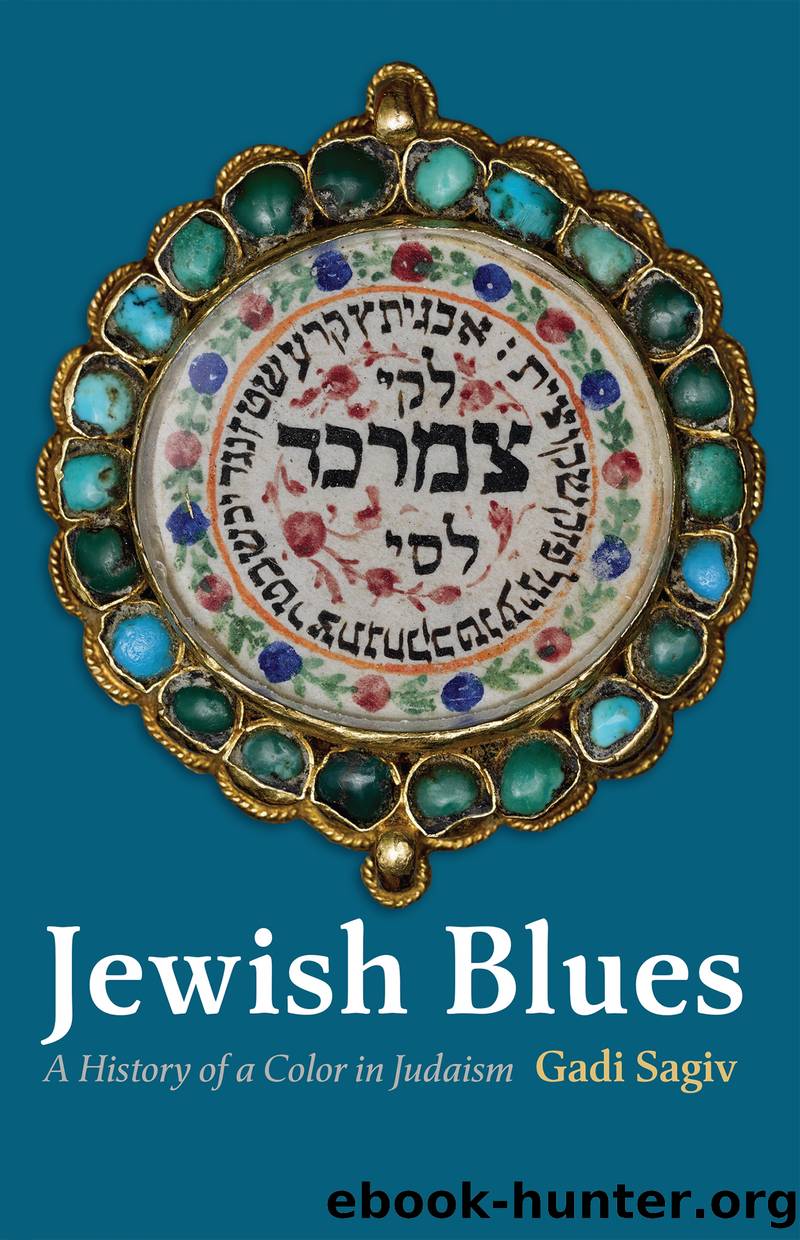Jewish Blues by Sagiv Gadi;

Author:Sagiv, Gadi;
Language: eng
Format: epub
Publisher: University of Pennsylvania Press
Edelstein himself did not take an active part in the search for the mollusks or the preparation of the dye; he was an initiator, and his actions pushed others to take up the gauntlet. The resulting research by the marine biologist Ehud Spanier and his associates provided the mollusks for the two other independent research efforts on the subject: the projects of Israel Ziderman and Otto Elsner.
Israel Ziderman (b. 1936), who served as a senior scientist at the Israel Fiber Institute, was first drawn to the issue of tekhelet in 1969, when the editors of the Talmudic Encyclopedia asked him to evaluate Herzogâs dissertation for the preparation of the article âḤillazon.â104 Like Edelstein, Ziderman also began researching the subject, basing his efforts on Herzogâs dissertation. A biochemist and an Orthodox Jew, he combined scientific investigation with religious-legalistic considerations. In the 1970s, he became acquainted with the Center for Maritime Studies of the University of Haifa and contacted Ehud Spanier, who sent Ziderman some live Murex snails. From those snails, Ziderman succeeded in producing a violet dye that he identified as tekhelet. In 1984, he founded Keren Hatekhelet (Tekhelet Foundation) âin order to promote the perpetuation of Rabbi Herzogâs study.â105 The association did not achieve the goals set by its founder and eventually closed its doors in 1994.
The third research path was spearheaded by Otto Elsner, a textile expert and professor at the Shenkar College of Engineering and Design in Ramat Gan, Israel. Elsner was attracted to tekhelet when a group of Radzin Hasidim asked for his help in improving the tekhelet that they had prepared according to a procedure attributed to their rebbe, Gershon Henekh Leiner. Elsner wrote that he immediately understood that the Radzin tekhelet was not the ârealâ tekhelet and refused to cooperate with them. It seems that he suspected that this was a fraud. Nevertheless, the request of the Radzin Hasidim sparked his interest in the subject. He conducted extensive research on tekhelet and concluded that as long as there was no archaeological evidence of dyed tsitsit, one could not draw definite conclusions. He also adopted the premise, which was actually a personal impression, that the hue of tekhelet must be blue.106 It was only after he began cooperating with Ehud Spanier from Haifa University that he obtained mollusks for his experiments. Eventually, in the mid-1980s, Elsner and Spanier succeeded in producing a blue hue from a Murex secretion by exposing the solution of the dissolved pigment to the sun.107 Elsner explicitly stated that this result was based on a study conducted by two German scientists.108 Nevertheless, later narratives of tekhelet would describe it as a serendipitous and original theoretical innovation.
Although some of the aforementioned figures were Orthodox Jews who wanted to renew the laws of tekhelet, all of them remained within the domain of academic research. It was Rabbi Eliyahu Tavger (b. 1960) who actually took the scientific achievements out of the laboratory and applied them to religious life. Tavgerâs attention was drawn to the ongoing tekhelet research in 1986 by Menachem Burstein (b.
Download
This site does not store any files on its server. We only index and link to content provided by other sites. Please contact the content providers to delete copyright contents if any and email us, we'll remove relevant links or contents immediately.
Cecilia; Or, Memoirs of an Heiress — Volume 1 by Fanny Burney(32029)
Cecilia; Or, Memoirs of an Heiress — Volume 3 by Fanny Burney(31441)
Cecilia; Or, Memoirs of an Heiress — Volume 2 by Fanny Burney(31391)
The Great Music City by Andrea Baker(30762)
We're Going to Need More Wine by Gabrielle Union(18613)
All the Missing Girls by Megan Miranda(14636)
Pimp by Iceberg Slim(13757)
Bombshells: Glamour Girls of a Lifetime by Sullivan Steve(13670)
Fifty Shades Freed by E L James(12892)
Talking to Strangers by Malcolm Gladwell(12836)
Norse Mythology by Gaiman Neil(12796)
For the Love of Europe by Rick Steves(11342)
Crazy Rich Asians by Kevin Kwan(8868)
Mindhunter: Inside the FBI's Elite Serial Crime Unit by John E. Douglas & Mark Olshaker(8673)
The Lost Art of Listening by Michael P. Nichols(7141)
Enlightenment Now: The Case for Reason, Science, Humanism, and Progress by Steven Pinker(6857)
The Four Agreements by Don Miguel Ruiz(6298)
Bad Blood by John Carreyrou(6260)
Weapons of Math Destruction by Cathy O'Neil(5805)
